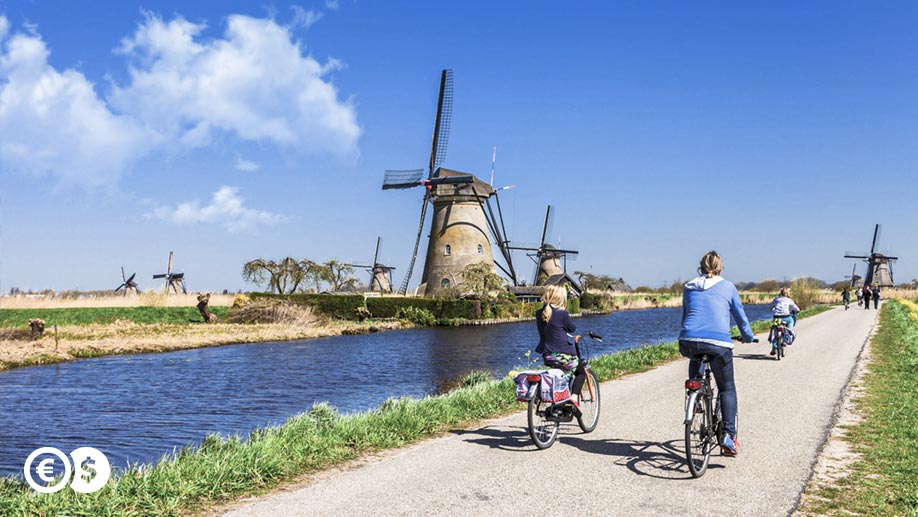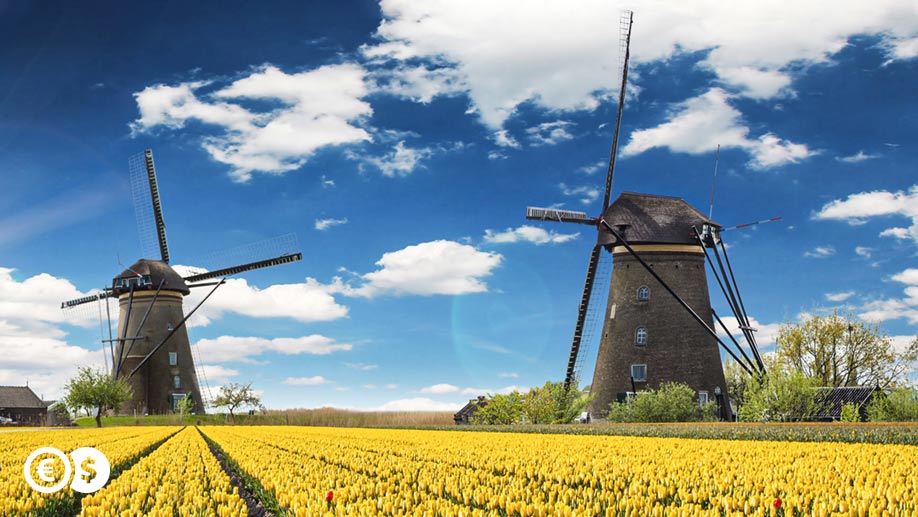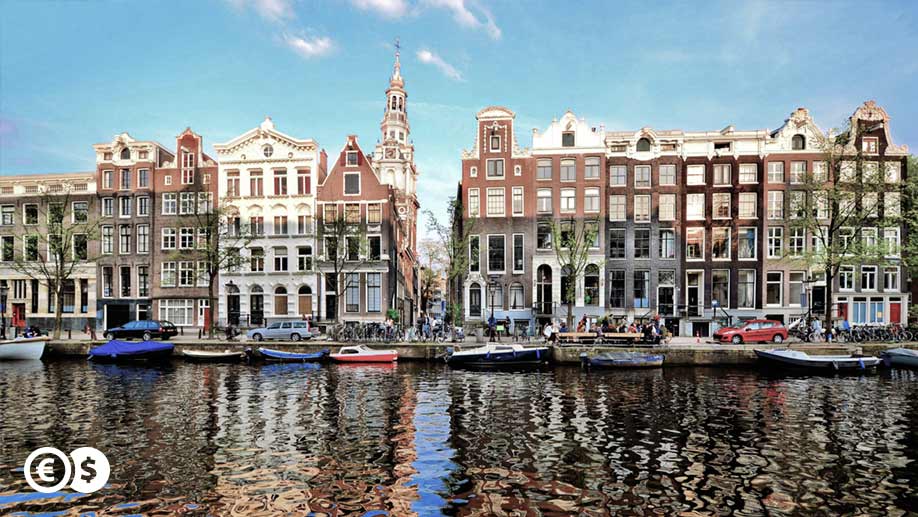Since 1 January 2020, Holland is no longer Holland. The government in Hague decided to change its name to the Netherlands. This is to improve the country's international image and to break the negative associations that have grown over the years.
Table of contents
A formal name change will cost a small European country around 200,000 EUR. The ministries, offices, public schools, universities and other state institutions have to update their websites with a new logo, consisting of the letters N and L, forming a tulip shape.

Rebranding a global brand
The Netherlands won't stop there. Soon a promotional campaign will be launched to change the perception of this country. The campaign will encourage tourists to visit this small but very charming place.
The Dutch government wants their country to be associated mainly with windmills, which, alongside fields of blooming tulips and ever-present bicycles, have been one of the country's significant symbols for many years.
Besides the development of tourism, the change of name is also supposed to contribute to the increase of national exports and emphasize the appropriate culture, norms and values. During the next Eurovision Song Contest, which takes place in May, we will see a representative of the Netherlands, not Holland. The new name will also be used for the national team at the Olympic Games Tokyo 2020.
What Holland was and what was it associated with
Etymology of the Holland term can be found in the early Middle Ages. It was used to describe the area around the city of Haarlem. The first mention of the name appeared in sources as early as in the 9th century.
The name derives from Germanic and possibly comes from two old Dutch words — holt (wood) and lant (country), which provide a picture of how the areas looked at that time. In the earliest Dutch chronicles from the 11th century, Holland occurs in reference to the county of Holland.
The decision of the Dutch authorities concerns only the English language. The government decided not to use the name 'Holland' in favour of 'The Netherlands' in its international marketing. The government chose to do so because, according to them, the Holland was mainly associated negatively — with a liberal approach to drugs or the Red Lantern District.
Moreover, the Dutch authorities do not appeal to other countries to make similar changes in their languages. Therefore, it is recommended to remain with names that have been used before.

With a visit to Venice of the North
Dutchmen encourage tourists to visit them. Although being a small country, it has a lot to offer. One of the most popular destinations is, of course, Amsterdam, which is considered one of the most multicultural cities in the world. It is estimated that over 170 nationalities live there.
When going to the Dutch capital, you can't miss a ride in one of the touring boats along the numerous canals, which are surrounded by tall, old townhouses. It is worth paying attention to their heights — most of them are very narrow but extremely high. The slight width is related to the fact that the land plots were expensive, so they were built upwards. Only the wealthiest merchants could afford larger residences, buying several plots of land next to each other. Local artists — Rembrandt, Frans Hals, Jan Vermeer or Ferdinand Bol — took care of their decoration.
One should visit the NEMO Science Museum, which is called Titanic by the locals due to its shape. From its top, you can see a spectacular view of the city, and inside the building, there are exhibitions full of exciting inventions waiting for you.
You can't forget about Museum district - Museumplein. There used to be a coach park there. Today space is used for small cafés, shops and, of course, museums. It takes a lot of time to visit them all. However, you should definitely go to the Rijksmuseum. It contains works by the most outstanding Dutch painters of the Golden Age. In a special section, you can admire sculptures and decorations. This is an expedition for the whole day.
It is worth having a look at Dam Square, which is a kind of social meeting centre for residents and tourists. There is a place, among others, built in the 17th century — The Royal Palace, which once served as the residence of monarchs. Today, state celebrations are held there, as the king resides in The Hague.
If the hustle and bustle of the Dam Square get in the way, you can seek some peace in Begijnhof, the headquarters of the Beguines and Beghards order, who have lived there since 1346. Today, there is a hostel for single women and widows, where peace and quiet are required. This is an opportunity for deeper reflection and consideration.
Not far from Dam Square you can find the famous Red Light District. Although the Netherlands wants to break free from the negative image, many tourists cannot imagine a trip to Amsterdam without visiting this area. During the daytime, it looks quite ordinary. It is only in the evening that red neon lights illuminate the characteristic tenement houses, and the visitors from the showcases are attractively looked at by ladies of easy virtue.

The land of windmills and tulips
To visit the Netherlands it is worthwhile to take some time and go beyond Amsterdam. You can find real treasures there — small towns, where life goes on at its own pace, typical windmills in the province, and colourful fields of tulips stretching across the horizon during the season.
The A7 motorway, which runs along the Afsluitdijk water dam, separating the lake IJsselmeer from the North Sea, is a remarkable experience as well. The water surrounds the road from both sides, and the car parks along the way encourage you to stop for a while and enjoy the spectacular views in peace.
Travelling from Amsterdam towards the dam, you should also go to the open-air museum Zaanse Schans, where time has stood still. It was there that the Dutch heritage was brought to life in the form of numerous windmills along the Zaan River, colourful houses from the turn of the 18th and 19th centuries, small farms with animals or craft buildings. There are about 30 historical constructions. This charming place provides entertainment for a nice few hours.
Slightly south of Amsterdam you can reach Vinkeveen. This is a small, inconspicuous town of about 8,000 inhabitants. It is known to be mainly built on... a lake. The houses are located on thin strips of land. From a bird's eye view, it looks like someone cut the ground with scissors. Only a boat can get to some property.
A notable city on the Dutch map is also Delft. Not as touristic as Amsterdam, but still offers many exciting places to visit, including Gothic buildings. From here, it is already a short distance to Rotterdam. There, modern skyscrapers aspire to be called the Dutch Manhattan, and the largest port in the country encourages you to take a boat ride. However, we won't find too many monuments there — the old buildings mostly didn't survive the German bombings during World War II.
Not far from Rotterdam is The Hague — the modern home of Dutch monarchs, parliament and the International Court of Justice. The Binnehof government, the Mauritshuis museum of Dutch painting, the 19th-century shopping mall and the Mesdag panorama are all worth seeing here. Those who prefer pleasurable laziness should visit the Scheveningen holiday resort near The Hague and enjoy the popular miniature park Madurodam. In this place you will find the whole of the Netherlands depicted on a scale of 1:25.

Multiple changes on maps
The Netherlands is not the first country to change its name. It has historically taken place many times, although rarely done in order to promote the region and tourism. More often it resulted from the division or merging of countries, the independence or decolonization process.
For example, Colombia was once called New Grenada, Iran was Persia, the Democratic Republic of Congo was called Zaire until 1997, and the former Siam is modern Thailand.
The change of name also reached the areas once belonging to the Dutch colonial empire. For example, the Dutch East India is modern Indonesia, and Dutch Guyana today is known as Suriname.



